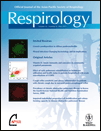Vitamin D: Stronger lungs as well as stronger bones?
Pulmonary infections and the influence of the sun have been important elements of human experience for millennia. As human populations moved to more extreme latitudes, skin pigmentations that had been advantageous in equatorial regions proved much less so. One major reason for the change in fitness could possibly relate to Vitamin D metabolism. Vitamin D, several related secosteroid hormones involved in the regulation of perhaps 1000 genes, has been of increasing interest for a wide variety of medical conditions.1 A meta-analysis of interventional studies has suggested the possibility that Vitamin D may decrease all-cause mortality,2 although most data on the benefits of supplementation remain suggestive rather than conclusive., The ubiquity of diseases associated with low Vitamin D levels suggest the possibility that low Vitamin D may be a marker of low sunlight exposure, physical inactivity and excess adiposity rather than a reliable therapeutic target.3 Nevertheless, Vitamin D is mechanistically involved in immunity, including respiratory infections. A large, retrospective nutritional survey suggested an inverse association between Vitamin D levels and the probability of recent respiratory tract infection, even after controlling for season (though not for latitude or other surrogates for sun exposure).4 Similar results, confounded by smoking and physical inactivity, were observed in Finnish military recruits.5
The study by Leow and colleagues in this issue of Respirology seeks to advance our understanding of the role Vitamin D might play in community-acquired pneumonia, a clinical diagnosis intended to encompass primarily bacterial causes of acute respiratory disease. Leow et al. evaluated levels of two antimicrobial peptides and admission 25-OH Vitamin D levels. Patients with extremely low Vitamin D levels had a much higher mortality than those with higher Vitamin D levels. Neither of the immune peptides was associated with outcome. An unexpected finding in the study was that Vitamin D levels were lower earlier in the winter rather than later, the opposite of what one would expect.
These results add to a growing chorus of voices suggesting the need for rigorously randomized and controlled interventional studies of Vitamin D supplementation. As most studies of Vitamin D, the present study almost certainly suffers from substantial confounding factors. Even in areas with high expected sun exposure, individuals with more highly pigmented skin tend to have lower Vitamin D levels.6 Leow's study incorporates patients of Maori ethnic origin, a group who may have both skin pigmentation that interferes with Vitamin D metabolism and differential access to health care or other markers of socioeconomic status. The presence of such a heavy potential confounder should give pause to interpretations, particularly when it is not clear how mortality was distributed among ethnic groups. Failure to control for other well-known confounders of Vitamin D levels and outcome (including smoking and Vitamin D supplementation) substantially limits our confidence about causal inference in this study.
Complicating assessment of Vitamin D further is that serum levels do not necessarily equate with biological activity. A recent randomized control trial in patients with tuberculosis found a small benefit of Vitamin D supplementation, but only in a subgroup of patients with a Vitamin D receptor mutation.7 As Vitamin D receptor polymorphisms have been reported as risk factors for autoimmune diseases,8 this is an added nuance to incorporate into both observational and prospective studies.
Measuring markers of immune function during clinical infection is a suboptimal experimental technique, but exigencies of research financing and coordination often make this approach the only available option. The association between particular markers of immune function and outcome is likely to be non-linear: for example, both low levels and high levels of a given mediator could be deleterious. Simple comparisons of central tendencies will not elucidate these relationships, but more sophisticated regression or modelling techniques require a larger sample size to yield useful information.
We look forward to randomized, controlled interventional studies of Vitamin D supplementation that can extend the knowledge gained from observational studies. Given the great importance of confounding in almost all observational results relative to Vitamin D, we would await the results of such studies before recommending supplementation in patients with community-acquired pneumonia.




